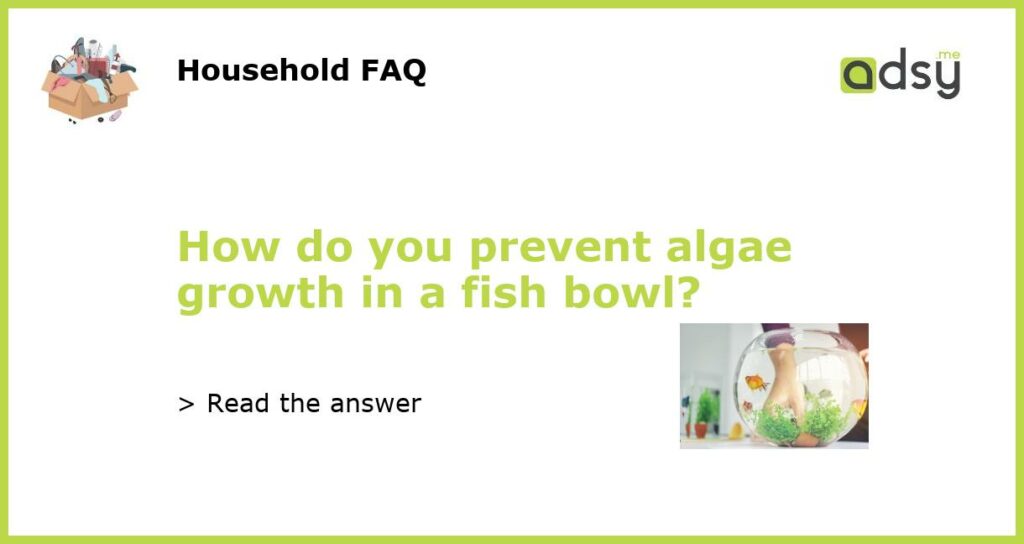Understanding Algae Growth in Fish Bowls
Algae are microscopic plants that thrive in warm, moist environments that contain sunlight and nutrients. This makes fish bowls an ideal environment for algae growth. An excessive growth of algae can harm the fish by reducing the oxygen levels in the water and blocking sunlight that the plants need to thrive. It is important to take steps to prevent algae growth in your fish bowl to maintain a healthy living environment for your pet fish.
Control Lighting and Temperature
The most crucial step to prevent algae growth is to control the amount of lighting your fish bowl receives. Avoid placing the fish bowl in direct sunlight as this will speed up the growth of algae. Instead, place the bowl in a location with indirect sunlight. You can also reduce the length of time you leave the light on. Only keep the light on for 8-10 hours a day as algae require at least 12 hours of light to thrive. Lastly, keep the water temperature below 75°F as warmer temperatures encourage algae growth.
Keep the Water Clean
Algae thrive in dirty water, so keeping the bowl clean is essential. Change the water regularly, at least once a week, and clean the bowl thoroughly. You can use a gentle detergent or cleaning solution designed for fish bowls to scrub the walls and bottom of the bowl. Be sure to rinse it well before adding fresh water. Additionally, you can add a small air pump and filter to keep the water clear of debris.
Add Algae-Eating Fish
Adding a few algae-eating fish can help prevent algae growth. Some common types of fish that eat algae include Siamese algae eaters, bristlenose plecos, and otocinclus catfish. However, be sure not to overload your fish bowl with too many fish as this can create an unhealthy environment for the fish and exacerbate the algae problem.
Use Algae-Inhibiting Products
There are several products available in the market that can help prevent algae growth in fish bowls. These products inhibit the growth of algae or remove existing algae from the bowl. Some of the commonly used products include algaecides, barley straw, and ultraviolet sterilizers. However, it is important to use these products carefully and sparingly as they can harm the fish if not used properly.
Avoid Overfeeding Your Fish
Overfeeding your fish can create a buildup of organic waste in the water, increasing the likelihood of algae growth. Be sure to feed your fish appropriate amounts of food and remove any uneaten food from the bowl. This will help to keep the water clean and prevent the growth of algae.






